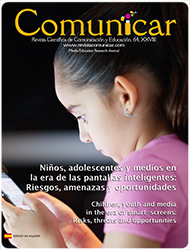Sharenting: Internet addiction, self-control and online photos of underage children
Keywords:
Sharenting, children exposure, online privacy, cybersecurity, digital competence, Internet addiction, self-control, risk behaviourAbstract
Sharenting is becoming a regular practice that compromises children’s safety and privacy. This phenomenon is related to the act of sharing images of underage children on the Internet by their relatives. At the same time, a concern arises about the levels of Internet addiction in the population. In turn, levels of Internet addiction are a current problem in modern societies that has been linked to low self-control. This paper aims to analyse the degree to which images are published and the reasons why the adult segment of the population practices sharenting, to determine the socio-demographic factors that have an impact on sharenting, Internet addiction and self-control, and to establish the correlations between these three variables. A total of 367 Spanish adults aged between 18 and 61 (M=28.98; SD=10.47) completed an online survey. Both the multiple regression analysis and the structural equation modelling revealed that: 1) Age emerges as a predictor of Internet addiction; 2) Age, gender and employment status are predictors of low self-control; 3) No socio-demographic factors were found to be predictors of sharenting; 4) The only significant correlation was observed between Internet addiction and self-control. Finally, practical implications of this paper on the protection of minors and adults’ need for information on Internet security are discussed.


